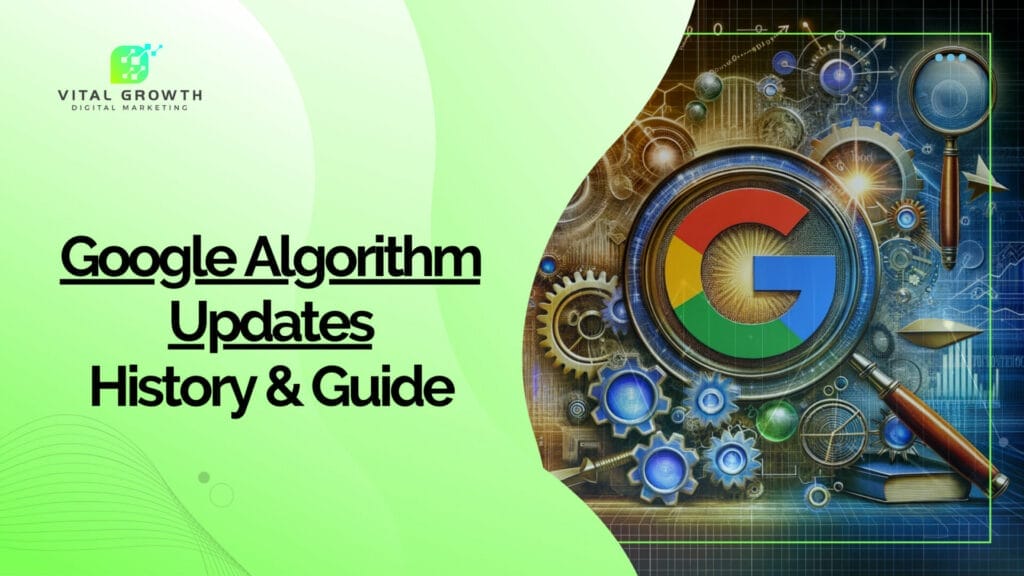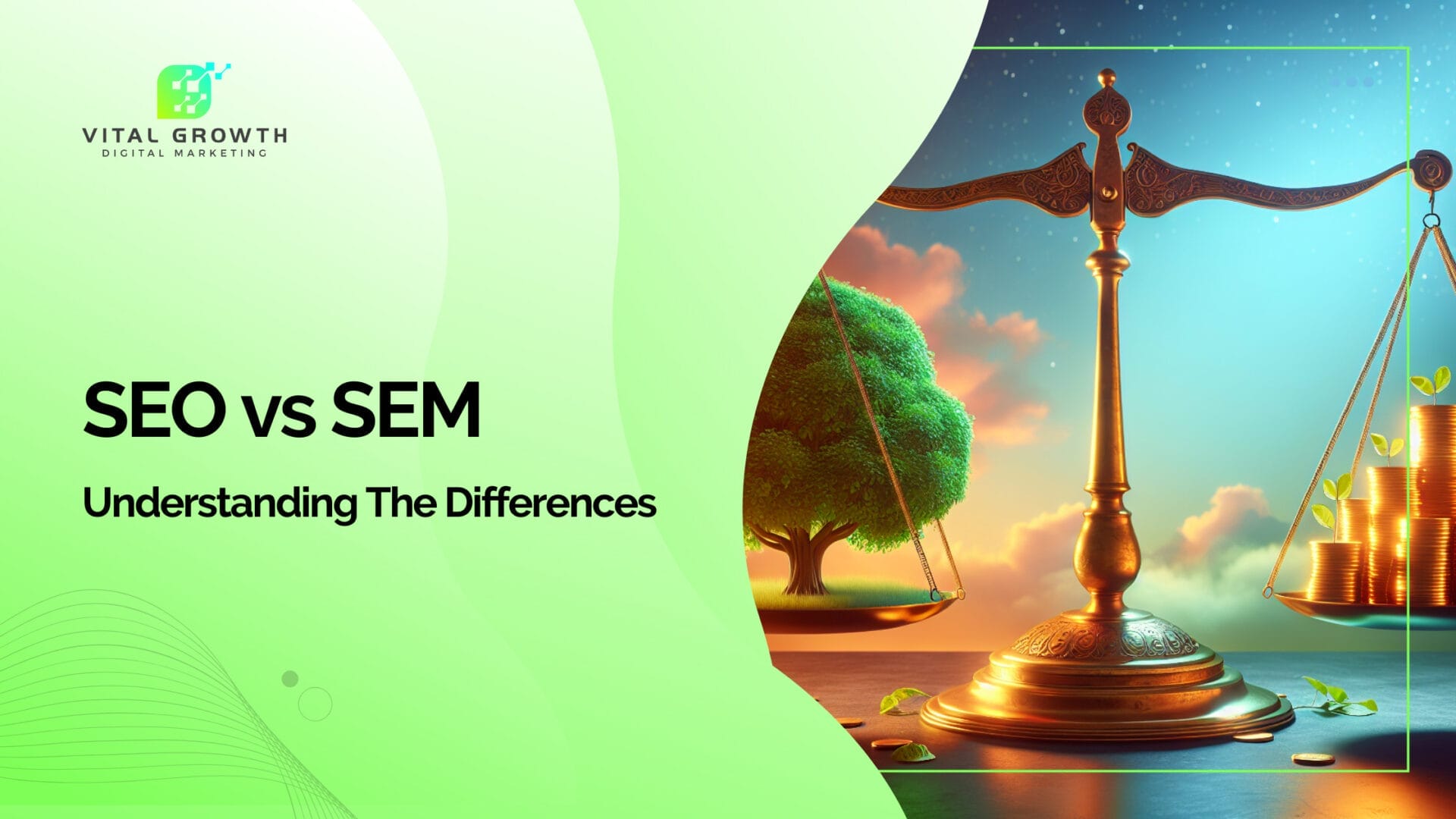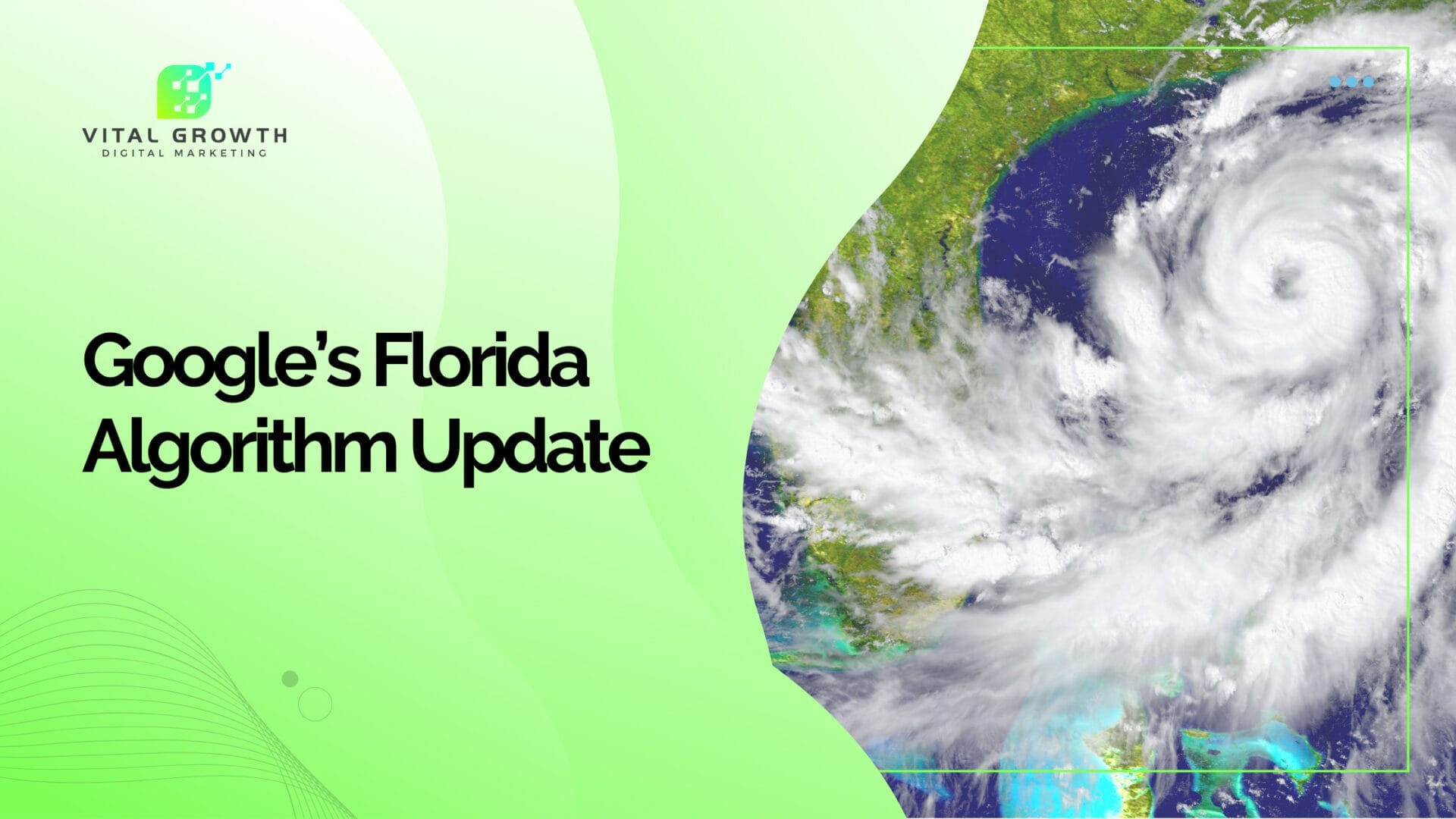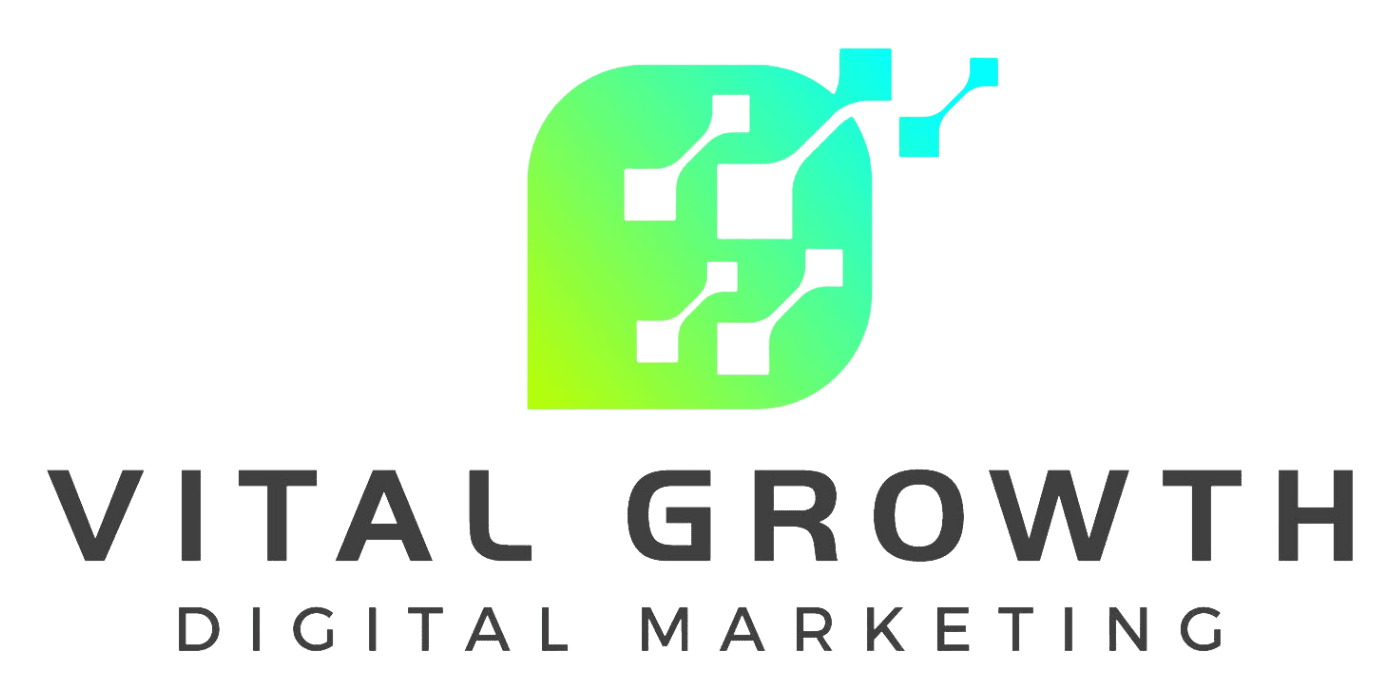Google continually refines its algorithms to enhance user experience and search accuracy. These Google Algorithm Updates, important to thier mission of organizing and democratizing information, are important for webmasters and marketers aiming to optimize their online presence.
From the early days of simple technical tweaks to the modern era of sophisticated AI-driven updates, understanding these changes is important for achieving SEO success and maintaining a competitive edge in the digital marketplace.

Key Takeaways
- Changing Standards: Google’s algorithm updates have moved from simple changes to advanced AI updates, focusing on good content and user-friendly sites.
- Technical Improvements: Updates like Big Daddy in 2005 focused on better handling of website technicalities and improving search results.
- Shifts in SEO: Major updates like Florida (2003) and Vince (2009) changed SEO, focusing on honest practices and the importance of brand trust.
- Focus on Good Content: The Panda Update (2011) targeted low-quality sites, showing the need for valuable content, while Penguin (2012) and Hummingbird (2013) aimed at stopping spam and understanding searches better.
- Importance of Core Updates: Google’s core updates, like the latest google algorithm update in November 2023, focus on evaluating content quality, affecting site rankings, and stressing the need for good content.
- How Search Works: Understanding how Google finds, indexes, and shows webpages is important to making your website more visible and popular.
- How Rankings Work: Google’s ranking systems use many factors, including content quality and user experience, to show relevant results.
- Recent Update Effects: Updates like BERT (2019) and the Page Experience Update (2021) improved understanding language and user experience, changing SEO strategies.
- Ongoing Algorithm Changes: Google keeps refining its algorithms, shown by thousands of changes each year, pointing to the ever-changing nature of SEO.
- Focus on Quality and Relevance: Updates like the Product Reviews Update highlight Google’s aim to promote in-depth, high-quality content in search results.
Google Algorithm Updates: A Journey Through the Evolution of Search
Google, the world’s leading search engine, continuously refines its algorithms to improve search results and user experience. These refinements, known as Google algorithm updates, have significantly altered the landscape of search engine optimization (SEO) over the years, emphasizing the importance of high-quality, relevant content and user-friendly websites.
The Google algorithm updates are important to Google’s mission to organize the world’s information and make it universally accessible and useful. Understanding these updates is extremely important for webmasters and website owners to optimize their websites and maintain or improve their search rankings.
For instance, the Big Daddy update, launched in 2005, was a major infrastructure upgrade that improved how Google handled URL canonicalization, redirects, and other technical aspects of search. This update shows Google’s commitment to enhancing its search algorithms’ technical accuracy and improving search results’ relevance and accuracy.
Google Algorithm Update History
The evolution of Google’s algorithm updates has had a major impact on the search engine optimization landscape. These updates have ranged from minor tweaks to major overhauls, each with unique objectives and impacts on search results.
For instance, the Florida update in 2003 was the first major algorithm update, and it targeted websites that manipulate search engines with SEO techniques such as keyword stuffing and hidden text. Websites that relied on these tactics found their rankings significantly impacted, and their traffic dropped drastically, underscoring the importance of ethical SEO practices.
In 2009, the Vince update was introduced, giving more visibility to big brands in search results. This update marked a shift in Google’s approach to ranking, emphasizing the importance of brand authority and trustworthiness in search rankings. The Vince update highlighted the growing role of brand reputation in SEO and the need for businesses to build strong, trustworthy brands to achieve higher rankings.
The Panda update in 2011 was another big milestone in the evolution of Google’s algorithm updates. This update targeted low-quality sites with thin content, keyword stuffing, and other poor SEO practices, drastically dropping their rankings.
The Panda update marked a major step forward in Google’s fight against web spam and low-quality content, emphasizing the importance of high-quality, valuable content for SEO purposes.
In addition to these, several other major updates, such as the Penguin, Hummingbird, and RankBrain, have further shaped search results, each with unique objectives and impacts. Understanding the history and impact of these updates can help webmasters develop effective SEO strategies that align with Google’s evolving and increasingly improving standards.
List of Major Google Algorithm Updates
The following list provides an overview of the major Google algorithm updates. Each update is listed chronologically when google released them, along with its primary focus and the impact it has had on SEO and search rankings.
This information is great for website owners, content creators, and SEO professionals who aim to adapt their strategies to align with Google’s evolving standards and maintain or improve their search engine rankings:
Google Florida Update (2003)
The Florida Update in 2003 targeted black-hat SEO techniques like keyword stuffing. It marked a significant shift in SEO, penalizing over-optimized content and steering strategies towards more ethical practices.
- Focus: Targeted keyword stuffing and other black-hat SEO techniques.
- Impact: Penalized websites with over-optimized on-page content, marking a major shift in SEO practices.
See more about Google’s Florida Update.
Google Big Daddy Update (2005)
Big Daddy focused on URL canonicalization and redirects, affecting how Google indexed URLs. This update highlighted the importance of technical aspects in SEO.
- Focus: Improved URL canonicalization, spammy backlinks, redirects, and much more.
- Impact: Affected the way Google indexed and handled URLs, and linked content.
See more about Google’s Big Daddy Update.
Google Jagger Update (2005)
Jagger aimed at penalizing paid links and reciprocal linking, decreasing rankings for sites using these manipulative link practices. It emphasized the need for authentic link-building strategies.
- Focus: Aimed to refine link quality, penalizing paid links and reciprocal linking.
- Impact: Decreased rankings for sites with manipulative link practices.
Google Vince Update (2009)
The Vince Update in 2009 gave more weight to brand authority and trustworthiness in search rankings. This favored well-known brands, recognizing brand strength as a significant ranking factor.
- Focus: Gave more weight to brand authority and trustworthiness.
- Impact: Favored well-known brands in search results, recognizing brand strength as a ranking factor.
Google Caffeine Update (2010)
Caffeine improved Google’s indexing speed, allowing for fresher search results. It made Google’s indexing process faster and more efficient, emphasizing the value of up-to-date content.
- Focus: Improved Google’s indexing speed, allowing fresher search results.
- Impact: Made Google’s indexing process faster and more efficient.
Google Panda Update (2011)
Panda targeted low-quality content, penalizing sites with thin content and high ad-to-content ratios. It prioritized high-quality, relevant content in search results.
- Focus and Impact: As previously described.
Google Freshness Algorithm Update (2011)
This update prioritized fresh, timely content, especially for news-related searches. Websites with regularly updated content benefited from improved rankings.
- Focus: Prioritized fresh, timely content in search results for certain queries.
- Impact: Benefited websites with regularly updated content, especially for news-related searches.
Google Page Layout Algorithm (2012)
Focusing on site layout, this update penalized sites with excessive ads above the fold, impacting sites more focused on ads than user-friendly content.
- Focus: Penalized sites with too many ads above the fold.
- Impact: Affected sites focus more on ads than user-friendly content layout.
Google Venice Update (2012)
Venice improved local search results by integrating local data into global searches, increasing visibility for local businesses in broader queries.
- Focus: Improved local search results by integrating local data into global search results.
- Impact: Increased visibility for local businesses in broader search queries.
Google Penguin Update (2012)
Penguin targeted web spam and manipulative link schemes, penalizing sites engaged in these practices and prioritizing the authenticity of content and links.
- Focus and Impact: As previously described.
Google EMD (Exact Match Domain) Update (2012)
This update reduced rankings for low-quality sites with domain names matching popular search queries, targeting sites exploiting exact match domains but offering poor content.
- Focus: Reduced rankings for low-quality sites with domain names matching search queries.
- Impact: Targeted sites that had exact match domain names but poor-quality content.
Google Payday Update (2013)
Payday aimed to clean up results for “spammy queries” like payday loans and pornography, reducing the visibility of spammy and low-quality sites.
- Focus: Aimed to clean up search results for traditionally “spammy queries” like payday loans, pornographic, and other heavily spammed queries.
- Impact: Reduced the visibility of spammy sites.
Google Hummingbird Update (2013)
Hummingbird enhanced search results by understanding the context and intent behind queries, delivering more relevant results for complex searches.
- Focus and Impact: As previously described.
Google Pigeon Update (2014)
Pigeon enhanced local search results, tying them closely to traditional web search ranking signals, and affecting ranking parameters for local businesses.
- Focus: Enhanced local search results by tying them more closely to traditional web search ranking signals.
- Impact: Improved ranking parameters for local search, affecting local businesses.
Google Mobilegeddon Update (2015)
Mobilegeddon prioritized mobile-friendly websites in Google’s mobile search results, encouraging webmasters to adopt responsive design.
- Focus and Impact: As previously described.
Google Quality Updates (2015)
These updates refined Google’s assessment of website quality, affecting a wide range of websites by focusing on content quality and user experience.
- Focus: Improved the quality of search results by refining how Google assessed website quality signals.
- Impact: Affected a wide range of websites, focusing on content quality and user experience.
Google RankBrain Update (2015)
RankBrain introduced machine learning in processing search results, enhancing Google’s ability to interpret and match queries with relevant search results.
- Focus and Impact: As previously described.
Google Fred Update (2017)
Fred targeted sites violating Google’s guidelines, focusing on revenue over user experience. It penalized sites with excessive ads and low-value content.
- Focus: Targeted websites that violated Google’s webmaster guidelines, particularly those focused on revenue over user experience.
- Impact: Penalized sites with excessive ads, low-value content, and little added user benefit.
Google BERT Update (2019)
BERT used natural language processing to understand the context of words in queries, improving the accuracy and relevance of search results.
- Focus and Impact: As previously described.
Google Page Experience Update (2021)
This update integrated user experience factors like page speed and mobile-friendliness into ranking criteria, promoting sites offering a better user experience.
- Focus and Impact: As previously described.
Google Product Reviews Update (2021)
Focused on rewarding in-depth, well-researched product reviews, this update encouraged more informative and useful product review content.
- Focus and Impact: As previously described.
Page Experience Update (Desktop, 2022)
By expanding page experience factors to desktops, this update improved visibility for sites offering good user experience in desktop searches.
- Focus: Extending page experience factors to desktop searches.
- Impact: Sites with good user experience on desktop searches see improved visibility.
March 2022 Product Algorithm Update
Targeting product reviews, this update boosted well-researched and detailed product reviews in search results.
- Focus: Identifying high-quality product reviews.
- Impact: Well-researched and detailed product reviews get a boost in search results.
May 2022 Core Update
A broad update improving overall search quality, the May 2022 Core Update had varied effects on search rankings across different websites and content types.
- Focus: General improvements to overall search quality.
- Impact: Varied effects on search rankings for different websites and content types.
July 2022 Product Reviews Update
This update enhanced the quality and depth of product reviews, rewarding more informative and in-depth reviews.
- Focus: Enhancing the quality and depth of product reviews.
- Impact: Higher rankings for in-depth, informative product reviews.
Helpful Content Update (August 2022)
Focusing on user-centric content, this update prioritized useful content, demoting less helpful pages.
- Focus: Encouraging useful, user-focused content.
- Impact: User-first content gets priority; less helpful pages are demoted.
Broad Core Algorithm Update (September 2022)
A comprehensive update to the core search algorithm, it affected search rankings across various sites and content.
- Focus: Broad improvements to the core search algorithm.
- Impact: Changes in search rankings across a variety of sites and content.
Product Review Algorithm Update (September 2022)
Improving the quality of product review content, this update promoted comprehensive and well-researched reviews.
- Focus: Improving the quality of product review content.
- Impact: Comprehensive and well-researched product reviews are promoted.
October 2022 Spam Update
Addressing spam in search results, it reduced the visibility of spammy content.
- Focus: Addressing spam in search results.
- Impact: Reduced presence of spammy content in search results.
December 2022 Helpful Content Update
The December 2022 Helpful Content Update aimed to prioritize genuinely helpful and informative content. This update benefited content that provided real value to users, while pages with less useful information saw a drop in their rankings.
- Focus: Prioritizing genuinely helpful and informative content.
- Impact: Content offering real value to users is benefited; less useful pages drop in rank.
December 2022 Link Spam Update
This update introduced “SpamBrain” to combat unnatural links. Websites engaging in link spam tactics experienced a decrease in their search rankings, reinforcing the importance of authentic linking strategies.
- Focus: Using “SpamBrain” to address unnatural links.
- Impact: Sites using link spam tactics see a decrease in rankings.
February 2023 Product Reviews Update
Focused on improving rankings for high-quality product reviews across various languages, this update encouraged more in-depth, informative content, rewarding detailed and well-researched reviews.
- Focus: Improving rankings for high-quality product reviews in various languages.
- Impact: Encouragement for more in-depth and informative product review content.
March 2023 Core Update
The March 2023 Core Update made broad adjustments to Google’s core search algorithm. It resulted in significant shifts in search rankings across various websites and content types.
- Focus: Broad adjustments to Google’s core search algorithm.
- Impact: Significant shifts in search rankings across various websites and content types.
April 2023 Reviews Update
This update enhanced the quality of review content at the page level. It aimed to elevate the quality of product reviews in search results, recognizing the importance of detailed and informative reviews.
- Focus: Enhancing the quality of review content on a page level.
- Impact: Elevated quality of product reviews in search results.
August 2023 Core Update
The August 2023 Core Update brought broad updates to enhance search relevancy and quality. This led to notable changes in search rankings, affecting a wide array of websites.
- Focus: Broad updates to improve search relevancy and quality.
- Impact: Notable changes in search rankings, affecting a wide array of websites.
September 2023 Helpful Content Update
Focused on rewarding helpful, user-centric content, this update promoted content that provided genuine value to users, enhancing the user experience in search results.
- Focus: Rewarding helpful, user-centric content.
- Impact: Promotion of content that provides genuine value to users.
October 2023 Spam Update
Targeting global spam in many languages, the October 2023 Spam Update aimed to reduce the visibility of spammy content in search results, cleaning up the search environment.
- Focus: Targeting global spam in many languages.
- Impact: Reduced visibility of spammy content in search results.
November 2023 Core Update
This update involved general improvements to Google’s core algorithm. It greatly affected search rankings across various content and websites, reflecting Google’s ongoing efforts to refine search quality.
- Focus: General improvements to Google’s core algorithm.
- Impact: Wide-ranging effects on search rankings across various types of content and websites.
These updates represent key milestones in Google’s ongoing effort to refine its search algorithms, each targeting specific aspects of websites’ content, structure, and user experience to improve the overall quality of search engine results pages.
Understanding Google Core Updates
Google’s core updates are a big aspect of its algorithm updates. Unlike specific page or site-targeted updates, these core updates focus on assessing content overall. They try to improve the quality and relevance of search results by refining how Google’s algorithms evaluate and rank content.
An example of a recent core update is the November 2023 Core Update, which aimed to refine content quality and relevance assessment. Such updates impact specific pages or sites, showing the significance of consistently delivering high-quality content to maintain favorable search performance.
In the past, Google announced these updates several times yearly, demonstrating its commitment to continuously improving its search algorithms. However, it’s important to note that recovery from the impact of a core update may not be immediate. It could take until the next broad core update for some sites to regain their previous rankings. This highlights the dynamic nature of search rankings and the need for continuous adaptation and optimization to align with Google’s algorithmic changes.
Google provides several resources and tools to help site owners and the SEO community understand and adapt to these core updates. These include the Google Search Central Blog and the Google Search Console, which offer valuable insights into the latest changes and their potential impact on search performance. By leveraging these resources, webmasters can stay informed about the latest updates and develop effective strategies to optimize their websites for search.
The Effects of A Major Google Algorithm Update
The impact of Google algorithm updates on search rankings, website traffic, and visibility is significant. These updates can lead to noticeable fluctuations in the performance of websites and search results. For instance, the Panda update in 2011 had a substantial impact on website rankings, particularly affecting low-quality sites. This update led to a drop in rankings for many websites, emphasizing the importance of high-quality, valuable content for maintaining good search performance.
In addition to the Panda update, other major algorithm updates, such as the Penguin and Hummingbird updates, have also had significant impacts on search rankings. The Penguin update, introduced in 2012, targeted web spam and manipulative link schemes, while the Hummingbird update in 2013 focused on improving the understanding of conversational search queries. These updates underscored Google’s commitment to combating web spam and improving the relevance and accuracy of search results.
Recovery from the impact of a core update may not be immediate and can take until the next broad core update. However, smaller updates can also have a positive effect on recovery. It’s important to note that there is no guarantee of recovery, as search rankings are dynamic and based on content quality. Therefore, staying updated with Google’s resources and tools for SEO improvement is crucial for webmasters to adapt to the evolving search landscape and maintain or improve their website’s performance.
Google’s Search Mechanics: Crawling, Indexing, and Serving
Understanding how Google Search works is crucial for webmasters to optimize their websites for search. Google Search operates in three stages: crawling, indexing, and serving search results. Each stage plays a critical role in determining how webpages are discovered, analyzed, and presented in search results.
In the first stage, crawling, Google employs web crawlers to find and add pages to its search index. This process involves discovering and visiting new and updated pages on the web, and utilizing Googlebot to fetch these pages. Googlebot is equipped to render pages and execute JavaScript, providing a comprehensive view of the content available on the web.
However, it’s important to note that not all pages are crawled by Googlebot. Some pages may be excluded due to factors such as disallowed access, site errors, or inaccessible pages. Therefore, webmasters need to ensure that their sites are easily accessible and crawlable to ensure effective discovery and indexing by Google.
The second stage, indexing, involves understanding the content of a page, identifying duplicate content, and collecting signals about the canonical page. Google’s indexing process is highly sophisticated, capable of analyzing and interpreting a wide range of content types, including text, images, and videos. However, it’s important to note that not every page is guaranteed to be indexed. The likelihood of a page being indexed depends on various factors, including the quality of content and metadata.
Finally, the serving stage involves presenting the most relevant search results based on the user’s query. This stage considers various factors, including the user’s location, language, and device, to deliver personalized and relevant search results. Webmasters need to understand these factors and optimize their sites accordingly to ensure their content is effectively presented in search results.
Understanding these mechanics is essential for webmasters to ensure their webpages are effectively crawled, indexed, and served in search results, ultimately enhancing their website’s visibility and traffic. By aligning their SEO strategies with these mechanics, webmasters can significantly improve their website’s performance in Google Search.
The Role of Google’s Ranking Systems
Google’s ranking systems are extremely important in the search engine’s ability to deliver relevant and high-quality search results. These systems sort through hundreds of billions of web pages to present the most suitable and valuable information to users in a fraction of a second. This process involves considering multiple factors, including the words used in the search query, the relevance and usability of webpages, the expertise of information sources, and the user’s location and settings.
For instance, when a user searches for “best Italian restaurants in New York,” Google’s ranking systems analyze webpages to identify those containing relevant content related to Italian cuisine in New York. The systems also consider the user’s location to provide personalized results. This demonstrates how Google’s ranking systems utilize various signals to ensure the search results are tailored to the user’s query and context.
Moreover, the ranking systems evaluate the quality, authoritativeness, and trustworthiness of the content available on the web. This is achieved by analyzing signals, such as links from reputable and influential websites. By assessing these signals, Google strives to deliver search results that not only fulfill the user’s immediate information needs but also provide reliable and credible sources of information.
In addition to these factors, Google’s ranking systems also consider the usability of webpages, including mobile-friendliness and quick loading times. This demonstrates Google’s commitment to providing a high-quality user experience, rewarding websites with a smooth and efficient user interface with higher search rankings. Therefore, webmasters need to focus on creating high-quality, relevant content and ensuring their websites offer a seamless and user-friendly experience.
Recent Google Algorithm Updates
In recent years, Google rolled out many algorithm updates that have reshaped the landscape of search engine optimization. These include the BERT (Bidirectional Encoder Representations from Transformers) update, introduced in late 2019, and the Page Experience Update, launched in mid-2021.
The BERT update focused on improving the understanding of natural language queries and context within search content. By using machine learning and artificial intelligence, this update enabled Google to understand the nuances of language better and deliver more relevant results for complex search queries.
For example, if a user enters a query like “2019 Brazil traveler to USA need a visa,” the BERT update helps the search engines understand the importance of the word “to,” resulting in more relevant results for travelers seeking visa information.
The Page Experience Update, on the other hand, prioritized user experience by considering factors like page loading speed, mobile-friendliness, safe browsing, core web vitals, and HTTPS security. Websites that meet these criteria are rewarded with better visibility in search results, enhancing the overall user experience. F
or instance, a website with fast-loading pages and seamless mobile responsiveness is more likely to rank higher in search results, leading to increased organic traffic and improved visibility.
These algorithm updates demonstrate Google’s commitment to refining its search algorithms to deliver enhanced user experiences and more relevant search results.
The Continuous Evolution of Google Algo Updates
Google’s commitment to continuous improvement is evident through the over 5,000 changes made to its search algorithms in 2021. This shows the dynamic nature of search rankings and emphasizes the ongoing evolution of Google’s algorithms to enhance the search experience for users.
Google runs more than 800,000 experiments annually, demonstrating the extensive testing and refinement undertaken to optimize the search experience.
An example of Google’s commitment to evolving its algorithms is the introduction of the BERT (Bidirectional Encoder Representations from Transformers) update. This update aimed to improve the understanding of natural language queries and context within search content, marking a significant leap in the sophistication of Google’s algorithms.
Google is committed to providing more relevant and high-quality search results, as evidenced by updates targeting product reviews and spam.
The Product Reviews Update, for instance, seeks to reward in-depth, high-quality product reviews over thin, superficial content. This update underscores Google’s ongoing efforts to improve the quality of content available in search results and provide
Best Practices for Adapting to Algorithm Updates
Adapting to Google’s algorithm updates is crucial for maintaining and improving your website’s search engine performance. Here are some best practices to follow:
- Stay Informed: Regularly follow updates from Google and reputable SEO news sources. Google’s Search Central Blog, forums, and social media channels like Twitter are great resources.
- Analyze Your Website Data: Use tools like Google Analytics and Search Console to monitor your site’s performance. Look for changes in traffic and rankings after an update to understand its impact.
- Focus on Quality Content: High-quality, relevant, and engaging content is consistently favored by Google. Ensure your content provides real value to your audience and adheres to Google’s content guidelines.
- Improve User Experience (UX): Google prioritizes sites with a good UX. Improve your site’s mobile-friendliness, loading speed, navigation, and overall design.
- Build a Strong Backlink Profile: Cultivate high-quality backlinks from reputable sources. Avoid dubious link-building strategies that can be penalized by updates like Penguin.
- Optimize for E-A-T (Expertise, Authoritativeness, Trustworthiness): Especially for YMYL (Your Money Your Life) websites, it’s important to demonstrate expertise and reliability in your content.
- Regular Audits and Adjustments: Conduct periodic SEO audits to identify and fix issues. Stay agile and ready to adjust your SEO strategy based on the latest updates.
- Avoid Shortcuts: Steer clear of black-hat SEO tactics. While they may offer short-term gains, they can result in penalties and long-term harm to your site’s ranking.
- Engage with the SEO Community: Join forums, webinars, and online communities to stay abreast of the latest trends and share insights with other professionals.
- Prepare for Volatility: Search rankings can fluctuate after an update. Stay patient and avoid making hasty changes until the update’s impact is fully understood.
Adapting to Algorithm Updates for Multilingual Websites
Adapting to Google’s algorithm updates requires a tailored approach for websites targeting audiences in multiple languages.
Here’s how to effectively manage SEO for multilingual sites:
- Localized Content Strategy: Tailor your content to suit each target audience’s cultural nuances and search habits. Avoid direct translations; instead, create content that resonates locally.
- Hreflang Tags for Language Targeting: Implement hreflang tags correctly to help Google understand your pages’ language and regional targeting, ensuring the right version is displayed in search results.
- Monitor Performance by Region: Use analytics tools to track the performance of your website in different languages and regions. Pay attention to how updates affect each version of your site.
- Quality Translation and Localization: Invest in high-quality translation and localization services. Content should be natural and conversational, not just grammatically correct.
- SEO Best Practices for Each Language: Understand that SEO tactics vary across languages and regions. Research the specific SEO trends and keyword preferences for each language you target.
- Local Search Trends and Behaviors: Stay informed about search trends and user behaviors in different regions. This can include preferred devices, search engines other than Google, and local social media platforms.
- Engagement with Local SEO Communities: Engage with SEO experts and communities in your target regions to stay updated on local algorithm changes or regional search trends.
How do I check for Google updates?
Stay informed about Google updates by following Google Search Liaison on Twitter, reading the Google Search Central Blog, and monitoring SEO news websites. Follow them here.
What impact do Google updates have on my website?
Google updates can affect your website’s search engine rankings, visibility, and traffic, depending on how well your site aligns with the changes and focus of the update.
How often does Google update its algorithms?
Google continually updates its algorithms, with significant core updates happening several times a year, alongside more frequent minor updates.
Can I recover my site’s ranking after a Google update?
Yes, recovery is possible by analyzing the update’s focus, adjusting your SEO strategy, and improving your website’s content and user experience.
How do I adapt my SEO strategy to Google’s updates?
Stay informed about each update, understand its focus, and adapt your SEO strategy to align with Google’s guidelines, focusing on high-quality, relevant content and a good user experience.
What is the best way to stay ahead of Google algorithm changes?
Regularly monitor industry news, use SEO tools to track your site’s performance, and be proactive in applying SEO best practices.
How can I determine if a Google update has affected my site?
Monitor your website’s analytics for changes in traffic and Google rankings, and use tools like Google Search Console for insights into your site’s search performance.
Ready to Elevate Your SEO Strategy?
Embrace the fast-changes of SEO with Vital Growth Digital Marketing. Our team’s expertise in innovative SEO and content strategies will elevate your brand’s digital presence.
Ready to improve your website rankings and get more clients? Contact us at Vital Growth Digital Marketing today and let’s unlock your brand’s full potential with our search engine optimization services.












